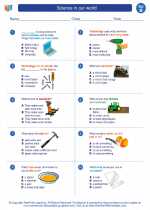Bryophytes
Bryophytes are a group of non-vascular plants that include mosses, liverworts, and hornworts. They are some of the most primitive plants on Earth and play important roles in the environment.
Characteristics of Bryophytes:
- Non-vascular: Bryophytes lack specialized tissues for transporting water and nutrients.
- Small size: They are typically small and grow close to the ground.
- Moist environments: Bryophytes require moist environments for reproduction and growth.
- Reproduction: They reproduce using spores and have a life cycle that involves alternation of generations.
Types of Bryophytes:
There are three main groups of bryophytes:
- Mosses: Mosses are found in various habitats and are characterized by their small leaf-like structures. They play important roles in soil formation and moisture retention.
- Liverworts: Liverworts are small, flat plants that often grow in damp, shady places. They are important in preventing soil erosion.
- Hornworts: Hornworts are named for their horn-shaped sporophytes. They are often found in moist environments and contribute to nutrient cycling in ecosystems.
Importance of Bryophytes:
Bryophytes have several ecological and practical importance:
- They help in retaining moisture and nutrients in the soil.
- They contribute to the formation of peat, which has been traditionally used as a fuel source.
- They are important for biodiversity as they provide habitats for small organisms.
Study Guide:
When studying bryophytes, it's important to focus on their characteristics, life cycle, and ecological roles. Here are some key points to include in your study guide:
- Define bryophytes and explain their non-vascular nature.
- Describe the life cycle of bryophytes, including the alternation of generations.
- Identify and describe the three main groups of bryophytes (mosses, liverworts, hornworts).
- Explain the ecological importance of bryophytes in soil formation, nutrient cycling, and biodiversity.
- Discuss the practical uses of bryophytes, such as in traditional fuel sources.
By understanding these key points, you will have a solid grasp of the significance of bryophytes in the natural world.
.◂Science Worksheets and Study Guides Second Grade. Science in our world
Study Guide Science in our world
Science in our world  Worksheet/Answer key
Worksheet/Answer key Science in our world
Science in our world  Worksheet/Answer key
Worksheet/Answer key Science in our world
Science in our world  Worksheet/Answer key
Worksheet/Answer key Science in our world
Science in our world  Vocabulary/Answer key
Vocabulary/Answer key Science in our world
Science in our world 

 Worksheet/Answer key
Worksheet/Answer key
 Worksheet/Answer key
Worksheet/Answer key
 Worksheet/Answer key
Worksheet/Answer key
 Vocabulary/Answer key
Vocabulary/Answer key

The resources above cover the following skills:
LIFE SCIENCE (NGSS)
Biological Evolution: Unity and Diversity
Students who demonstrate understanding can:
Make observations of plants and animals to compare the diversity of life in different habitats[Clarification Statement: Emphasis is on the diversity of living things in each of a variety of different habitats.] [Assessment Boundary: Assessment does not include specific animal and plant names in specific habitats.]